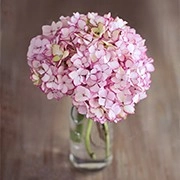Piano Brain Boost

Hey Lykkers! Ever caught yourself gazing at a piano, imagining your fingers dancing across the keys, creating something beautiful? Maybe you've always thought it was too hard, too late, or just not "your thing." But guess what? Piano playing isn't just for prodigies or concert halls—it's for anyone who wants to grow, relax, and have a little fun along the way.
Let's talk about how playing the piano can seriously level up your life—and yep, I'll even give you a few beginner-friendly tips to start tickling those ivories today!
Why You Should Totally Try Piano
1. It Builds Character (and Patience!)
Learning piano teaches you more than just notes. You'll develop discipline, focus, and perseverance. Sitting down daily—even for 10 minutes—can create a calming routine that brings structure to your day. Plus, finally nailing that tricky piece? Pure confidence boost!
2. It's a Workout for Your Brain
Studies show that playing the piano sharpens memory, improves coordination, and boosts creativity. It's like a brain game and a relaxing hobby combined—mental flexibility with a side of calm. And if you're worried about aging? Piano is known to help keep the brain young and active.
Dr. Charles Limb, Neuroscientist and Otolaryngologist says, "Playing music is a complex cognitive activity that stimulates brain plasticity, helping to keep the brain young and active, improving mental flexibility and emotional well-being."
3. It's Emotional Therapy
Ever feel things you can't quite put into words? The piano lets you express it all. Whether you're feeling joyful, nostalgic, or a little heartbroken, there's a song (or improvisation) waiting for you to bring it to life.
So... How Do You Start Playing?
No music degree? No problem! Here's how to dip your toes into the piano world:
Step 1: Get a Piano or Keyboard
If you're just starting out, grab a basic 61-key keyboard. Brands like Yamaha or Casio have beginner models under $150 (cost may vary). Digital pianos with weighted keys feel more like the real thing, but no pressure to splurge right away.
Step 2: Learn the Notes
Start by identifying the pattern of black keys—groups of two and three. The white key just to the left of each group of two is C. From there, it's C, D, E, F, G, A, B… then back to C.
A quick trick? Mark the keys lightly with stickers to help memorize!
Step 3: Play Your First Song
Try something super simple like "Twinkle Twinkle Little Star" or "Ode to Joy." You can find letter-based tutorials on social media platforms, where notes are labeled instead of traditional sheet music.
Example:
C C G G | A A G –
F F E E | D D C –
(That's "Twinkle Twinkle" right there!)
Step 4: Practice, But Make It Fun
Start with 10–15 minutes a day. Play songs you love, not just boring exercises. There are tons of apps like Simply Piano or Flowkey that gamify learning and make it feel like a musical video game.

Final Notes (Pun Totally Intended)
Learning piano isn't about being perfect—it's about feeling the music, growing your mind, and discovering joy in the process. Whether you dream of composing your own songs or just want to play a little tune for yourself after a long day, it's never too late to start.
So, Lykkers… ready to give it a try? Your first melody is just a key away.
Let me know if you want beginner sheet music, app suggestions, or easy songs to start with—I'm happy to help!

 · Art team
· Art team